We Promote Gardening Events in Canada.
🗓️ Today (1)
 Botanical and Gardens
Botanical and Gardens
2025 Winter Light Festival
Winter Light Festival at Nikka Yuko Japanese GardenCelebrating 10 Years of Lights and Friendship!Dates: November 28 – February 28 December: Wednesday – Sunday, 5:00 PM – 9:00 PM (8:30 PM…
🗓️ This Weekend (1)
 Botanical and Gardens
Botanical and Gardens
Minyo Dancing Performance
Warm up inside the Bunka Centre as the Nikkei Cultural Society Minyo Dancers share their vibrant folk dancing performances, the perfect cultural finale to your Garden <a href="http://visit.Performance" target="_blank" title="visit.Performance">visit.Performance…
🗓️ Next 7 Days (3)
 Botanical and Gardens
Botanical and Gardens
Boxing Day
Looking for a magical place to spend part of your holiday? ✨Nikka Yuko Japanese Garden will be open on Boxing Day from 5:00 pm – 9:00 pm, welcoming you into…
 Botanical and Gardens
Botanical and Gardens
Basha Nori (Horse & Wagon) Rides
Basha Nori is Back This December! Enjoy magical horse & wagon rides around Henderson Lake this holiday season, proudly provided by Once Upon A Time Rides and sponsored by CIR Realty.…
 Botanical and Gardens
Botanical and Gardens
Joya No Kane (New Year’s Eve Bell)
Celebrate the New Year with Joya no Kane at Nikka Yuko! ✨🔔 Join us during the Winter Light Festival for a meaningful Joya no Kane ceremony, as we ring the…
🗓️ Next 30 Days (13)
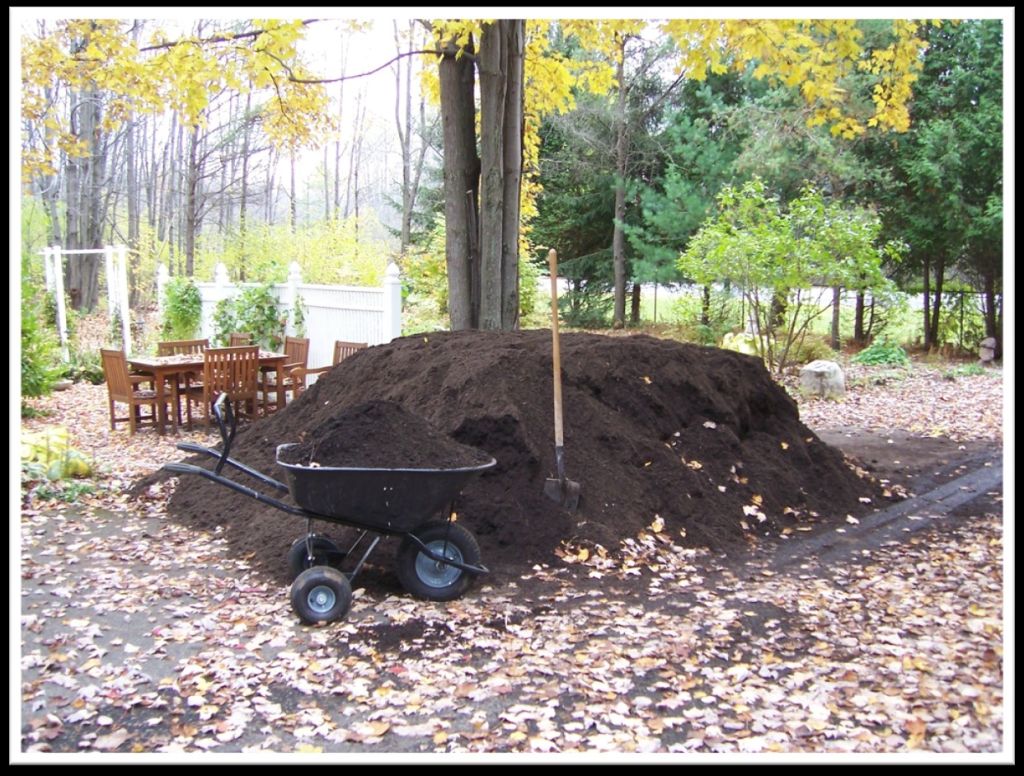 Online Events
💻 Online
Online Events
💻 Online
Soil – Don’t Call it Dirt!
Soil is the foundation for everything we grow, whether it is vegetables, ornamental plants, or a lawn. Retired Master Gardener, Mary Ann Van Berlo will speak about the importance of having…
Keep Fit in Winter (4 sessions)
Move easily this winter and Keep Fit!Get your body moving and feeling good! This class combines gentle, full-body exercises that boost your balance, agility, strength, and posture—all while helping prevent…
Renaturalizing the Don River – The Story of Biidaasige Park
Danny Brown is an urban planner with over a decade of experience in shaping cities, building communities, and protecting and conserving our public green spaces. He currently works for Parks…
Native Plant Series: Winter Sowing
Join us for an engaging workshop where you’ll learn about biodiversity, native plants & how to enhance your garden!Nature needs your help and it’s as simple as using native plants…
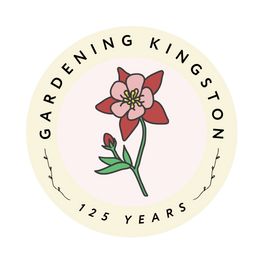 Online Events
💻 Online
Online Events
💻 Online
Fruit at the Ready! Berries, Berries, and More Berries
Join us on Zoom for a presentation by Mary Shearman Reid, a Master Gardener and owner of Green Thumb Garden Centre who will present ‘Fruit at the Ready’ including berries,…
Floral Design Program: Abstract Design
Build on your floral design skills and learn the concept of abstraction to floral design.Explore the concept of abstraction in the world of art and its application to floral art…
Orangeville – Melanie Kramer “Top Native Trees and Shrubs for your Yard”
Please welcome our guest speaker this evening, Melanie Kramer, as she talks about “Top Native Trees and Shrubs for your Yard”. Learn what will thrive in our zone 5 region.…
Orangeville – Melanie Kramer “Top Native Trees and Shrubs for your Yard”
Please welcome our guest speaker this evening, Melanie Kramer, as she talks about “Top Native Trees and Shrubs for your Yard”. Learn what will thrive in our zone 5 region.…
 Online Events
Online Events
OFNC Book Club Meeting
Location: Zoom. All OFNC members are welcome. Please first register by following this link:https://us02web.zoom.us/meeting/register/HWzbzQe4TNWqSxxFgItnvQ The Book:An Immense World: How Animal Senses Reveal the Hidden Realms Around Us(2022) by Ed Yong…
 Talks and Meetings
Talks and Meetings
Gardens of New Zealand
Jack Wilson will take you through some of the remarkable gardens of New Zealand which he visited the winter of 2024-25 as well as provide some tips for those considering…
Botanical Printed Notebook
Join us for a fun-filled day of creating a customized botanical printed notebook!Using the process of Linocut, you’ll be creating a custom printed Japanese notebook. From designing your image, through…
 Talks and Meetings
Talks and Meetings
Lavender
At our regular monthly meeting we will have auest speaker from Lavande Braydale Lavender. Everyone welcome.
 Talks and Meetings
Talks and Meetings
Creating a Native Species Garden
Meetings start at 7:00pm, with a brief business component before our guest speaker. This evening our speaker will be Hugh Metcalfe of Naturaide on the topic of Creating a Native…
🗓️ Later (30)
Botanical Mixed Media: Textured Peonies
Get creative this winter with an acrylic mixed media workshop!Experience the beauty and vibrancy of peonies in this fun and hands-on one-day workshop. Using acrylic paints and mixed media techniques,…
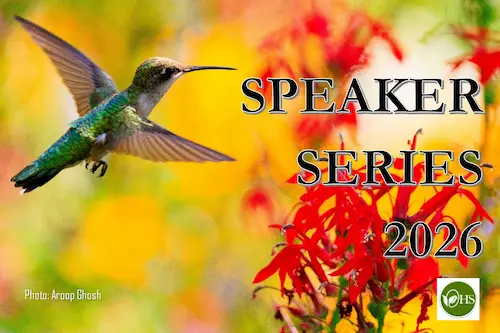 Online Events
Online Events
Combating Invasive Plants: Tackling the Phragmites in Ontario
Matt Bolding, Ecologist and GIS Professional, invasive Species Program Coordinator, Ducks Unlimited Canada (Eastern Region). Combating Invasive Plants: Tackling the Phragmites in OntarioInvasive Phragmites australis is an invasive…
Floral Design Program: Miniature, Small, and Large Floral Design
Join us and learn about how to best utilize space in your designs!By focusing on the size of various designs this course will illuminate questions of scale, proportion, and the…
Floral Design Program: Classic Design Fundamentals 1
Learn the basics of classic floral design including four styles – a water-viewing design, a centrepiece, a crescent, and a mass design.This course is the prerequisite to all other courses…
Orangeville – Billie Joe Reid “Nature Journaling”
Please welcome our guests tonight, Billie Joe Reid, as she talks about “Nature Journaling”. What a great way to get out and interact both mentally and physically with nature. Guests…
Orangeville – Billie Joe Reid “Nature Journaling”
Please welcome our guests tonight, Billie Joe Reid, as she talks about “Nature Journaling”. What a great way to get out and interact both mentally and physically with nature. Guests…
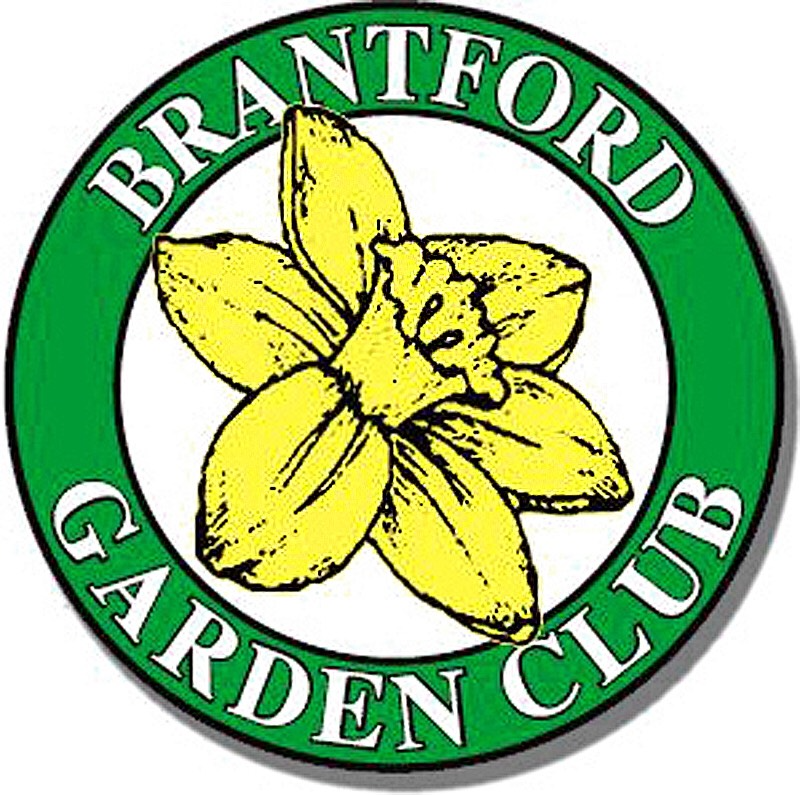
BRANTFORD GARDEN CLUB
STARTING SEEDS & GROWING VEGETABLES IN RAISED BEDS & CONTAINERS BY CONNIE BIJL
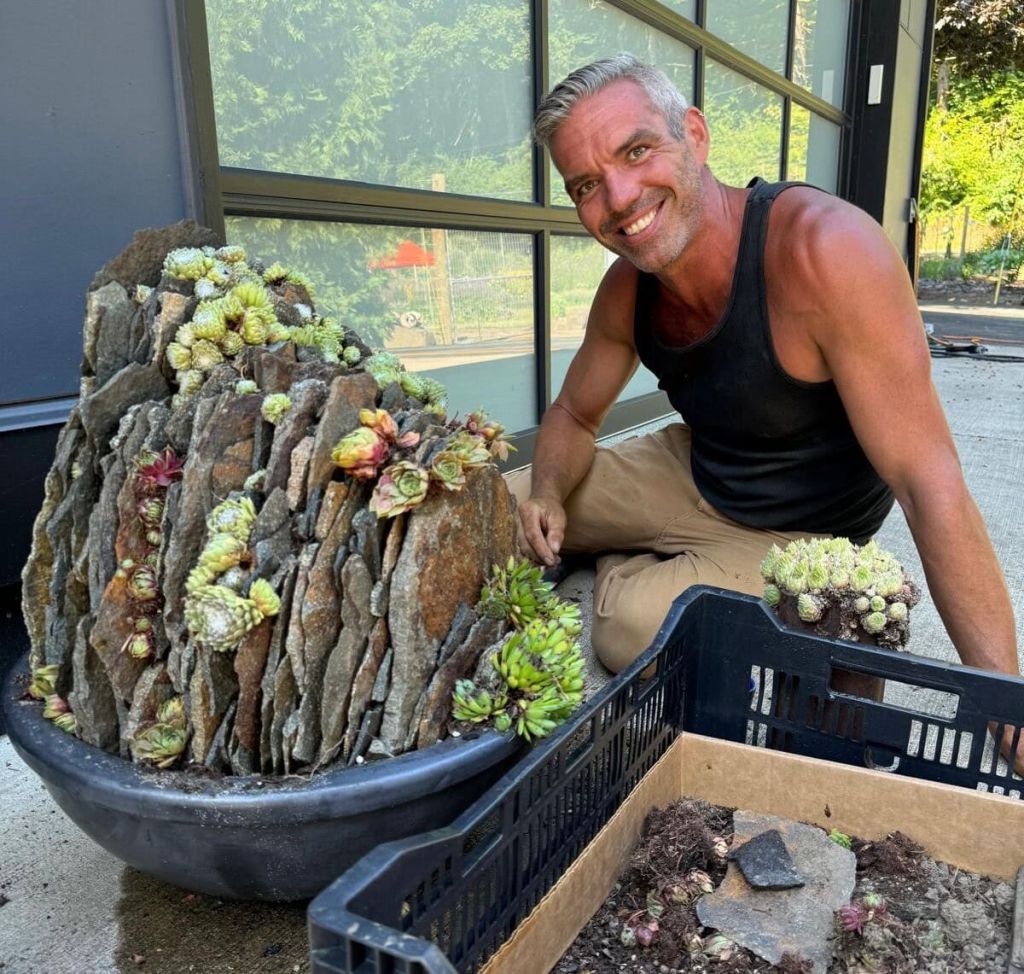 Online Events
Online Events
Creating a crevice garden for the smallest of spaces
In this talk, Chris focused on the design and drama of miniature crevice gardens. He discussed soil mediums, rock types and plants which he found to be successful in these…
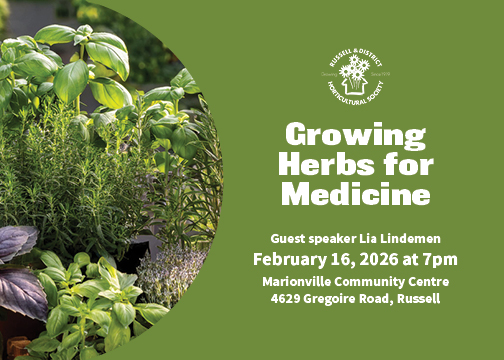 Talks and Meetings
Talks and Meetings
Growing Herbs for Medicine
At our regular monthly meeting we have guest speaker Lia Lindemen who will talk to us about growing herbs for medicine. Everyone welcome.
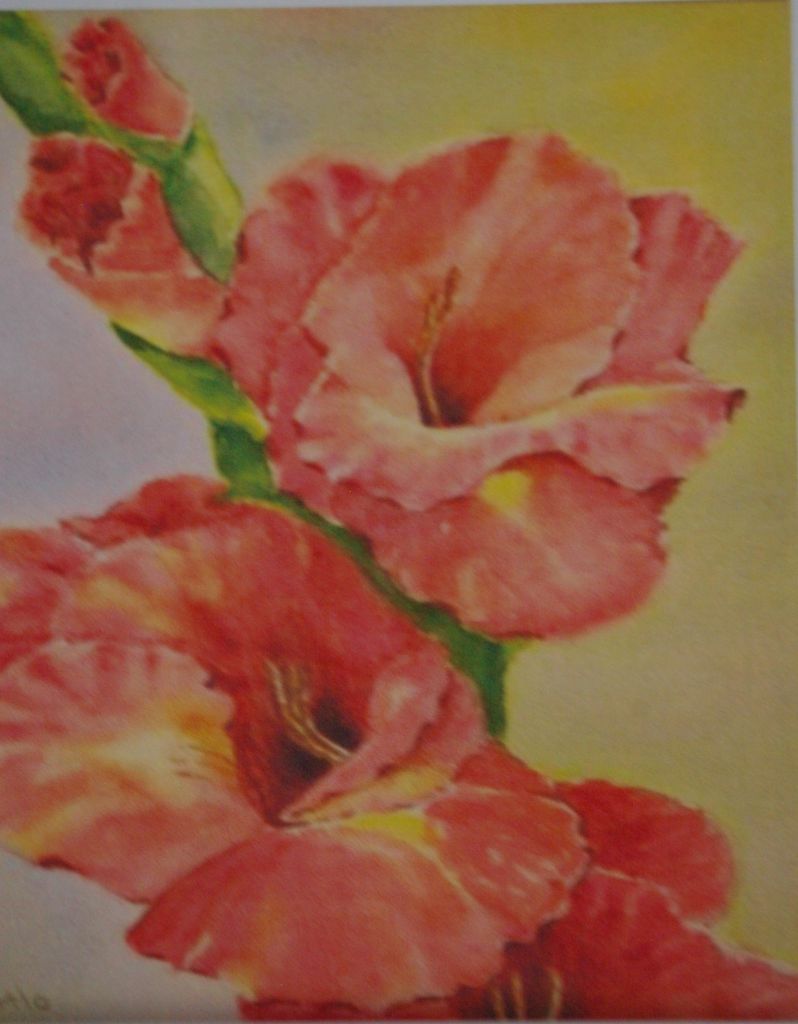 Talks and Meetings
Talks and Meetings
Growing and Caring for Dahlias
Meetings start at 7:00pm, with a brief business component before our guest speaker. Our speaker this evening will be Marnie Chown of Fair Sun Farm on the topic of Growing…
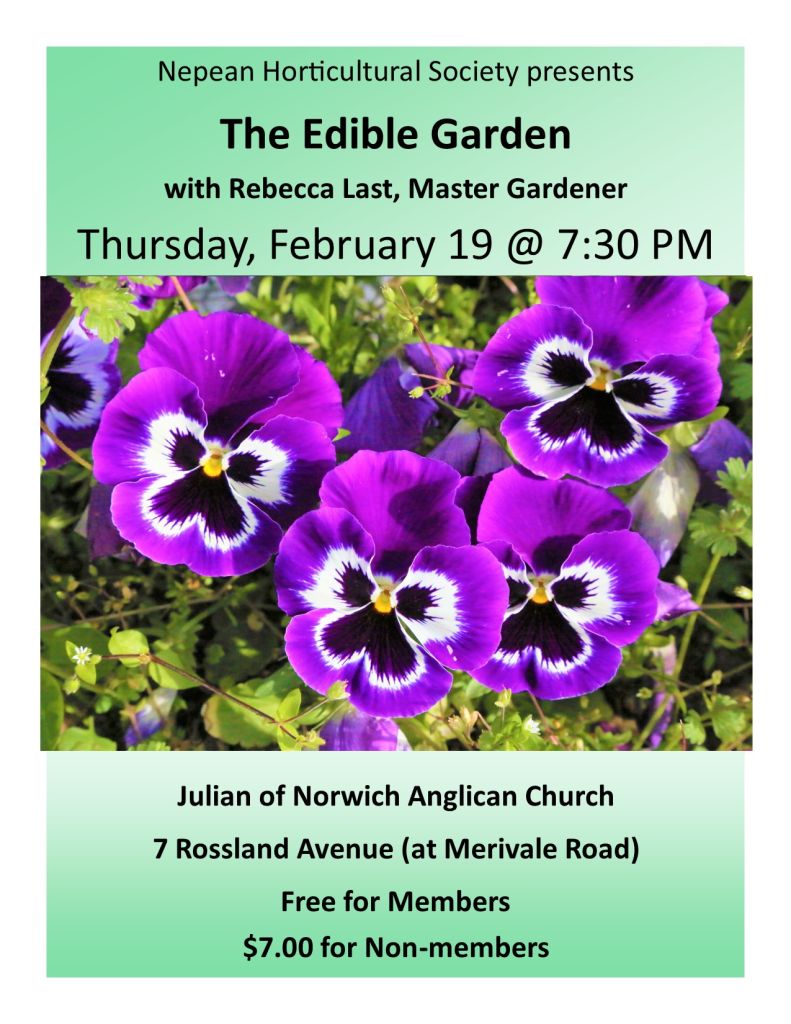 Talks and Meetings
Talks and Meetings

Get the Jump on Spring 2026
Where the Plant People Meet Shake off the winter blues and start the countdown to spring at Toronto Botanical Garden’s much-loved Get the Jump on Spring one-day garden extravaganza. Whether…
 Botanical and Gardens
Botanical and Gardens
Peacock Gala 2026
Welcome to a World of Shimmering Feathers For 2026, our annual Gala will transport you to a world of shimmering feathers and tropical natural splendor. You’ll enjoy an evening of…
Get the Jump on Spring 2025
Where the Plant People Meet Shake off the winter blues and start the countdown to spring at Toronto Botanical Garden’s much-loved Get the Jump on Spring one-day garden extravaganza. Whether…
 Online Events
Online Events
Organic Gardening for the Home Gardener
Pat Lucey, Gardening Instructor, Canadian Organic Growers. Organic Gardening for the Home GardenerThis engaging talk by an experienced organic farming specialist has been tailored specifically for…
Orangeville – Paul Brydges “A Backyard Garden Retreat”
Please welcome our guest speaker this evening, Paul Brydges, as he talks about “A Backyard Garden Retreat”. Relax in a beautifully designed area of your garden. Guests are welcome, free…
Floral Design Program: Classic Design Fundamentals 2
In this follow up to Classic Design Fundamentals 1, you will enrich your understanding of traditional design.Join Pat Ware in this follow up to Classic Design Fundamentals I and enrich…
Orangeville – Paul Brydges “A Backyard Garden Retreat”
Please welcome our guest speaker this evening, Paul Brydges, as he talks about “A Backyard Garden Retreat”. Relax in a beautifully designed area of your garden. Guests are welcome, free…
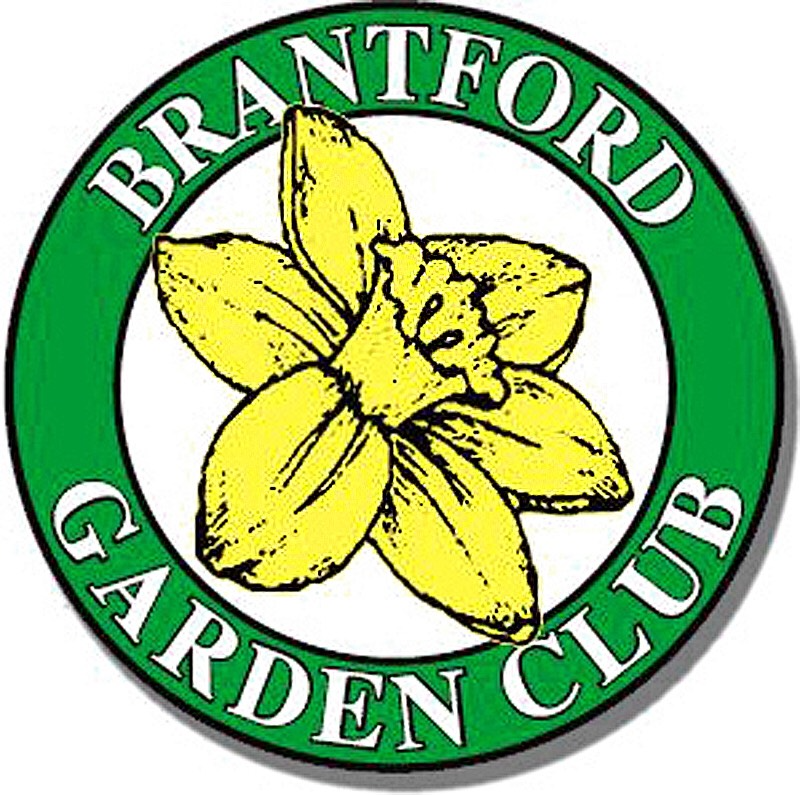
BRANTFORD GARDEN CLUB
GARDEN FORUM. Q&A. BY ALEX KUCHAREW & MARY THORNE
Brampton Seedy Saturday and Garden Show 2026
The Brampton Horticultural Society and the City of Brampton is pleased to invite you to join us for our Annual Seedy Saturday and Garden Show. If you are interested in…
 Sales, Swaps, Auctions
Sales, Swaps, Auctions
Brampton Seedy Saturday and Garden Show 2026
The Brampton Horticultural Society and the City of Brampton is pleased to invite you to join us for our Annual Seedy Saturday and Garden Show. If you are interested in…
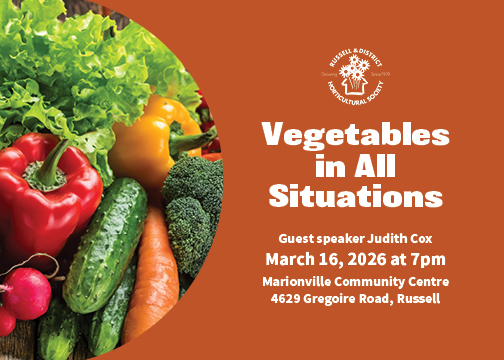 Talks and Meetings
Talks and Meetings
Vegetables in All Situations
At our monthly meeting we will have guest speaker Judith Cox who will talk to us about growing vegetable in all situations. Everyone welcome.
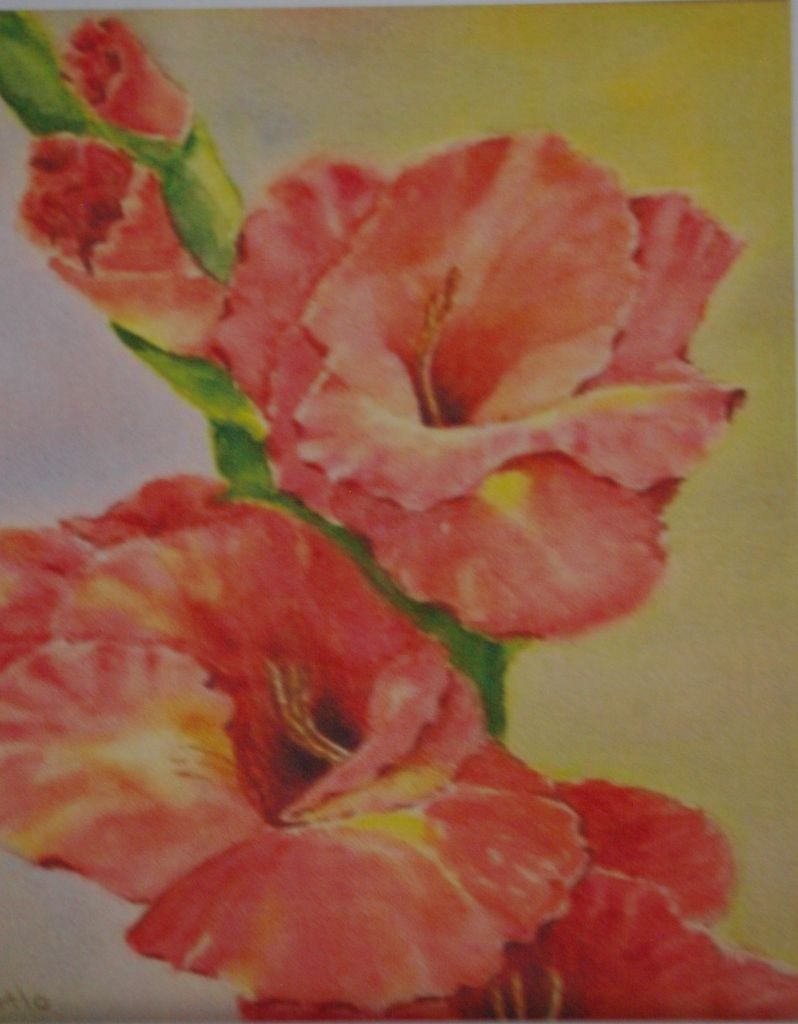 Talks and Meetings
Talks and Meetings
Gardening for the Birds
The meeting will begin at 7:00pm, with a brief business component before our guest speaker. This evening our presentation will be a virtual. Kristen Martyn will be speaking on Gardening…
 Talks and Meetings
Talks and Meetings
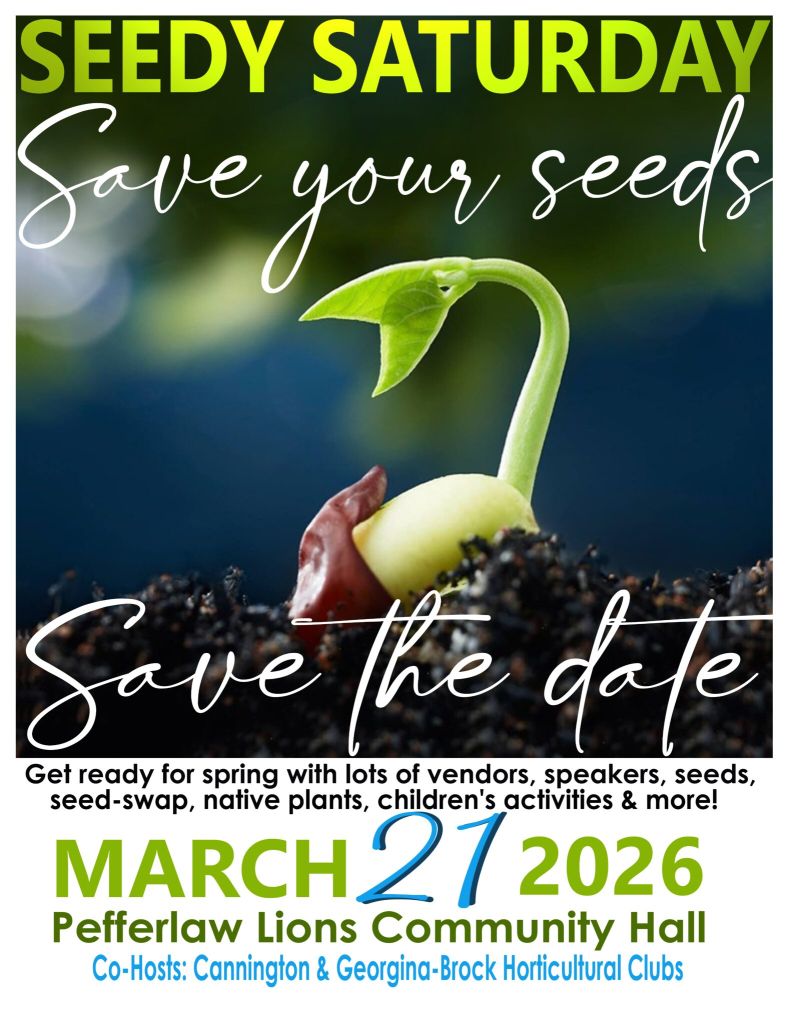 Community Activities
Community Activities
Seedy Saturday 2026
Mark your calendars and get ready to kick start your garden season for 2026. Co-Hosts Cannington Horticultural Society and Georgina-Brock Garden Club are already planning another fantastic Seedy Saturday experience…
Seedy Saturday 2026
Mark your calendars and get ready to kick start your garden season for 2026. Co-Hosts Cannington Horticultural Society and Georgina-Brock Garden Club are already planning another fantastic Seedy Saturday experience…
 Talks and Meetings
Talks and Meetings
Food For Life: How Some Organizations in Ottawa Are Addressing The Food Insecurity Gap
This panel of community leaders, experts and speakers from the Ottawa area,who are actively working to address food insecurity in our community, will be joining us to share some important…
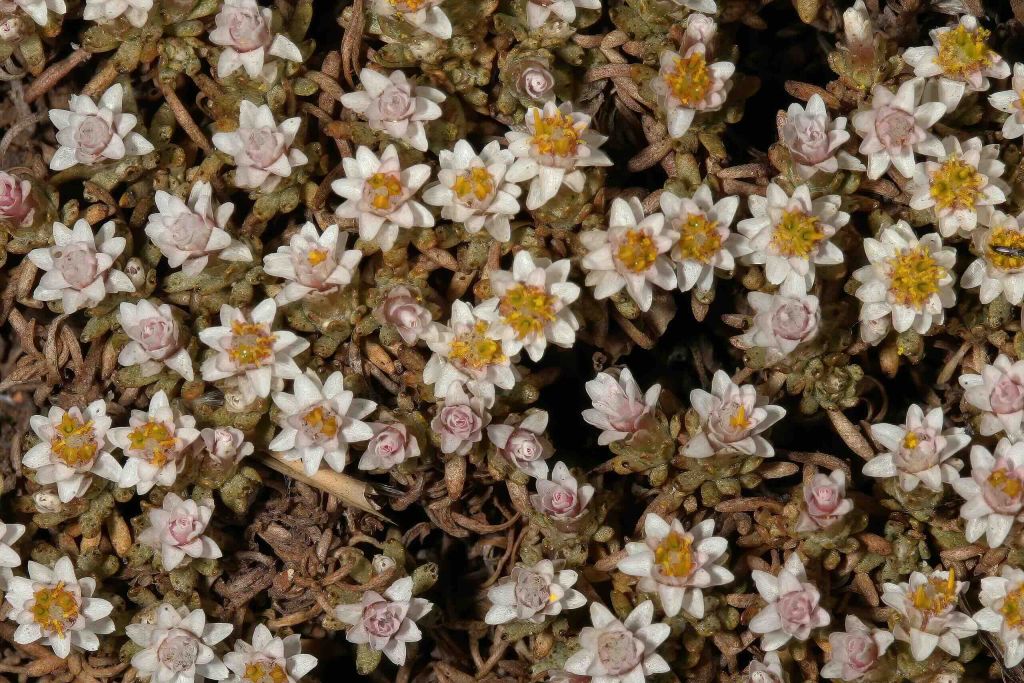 Talks and Meetings
Talks and Meetings
Crevice Garden – Trip to South Africa
This talk is by two members Tony and Annie. Tony will present the construction of his first rock garden at his home. Annie will present on the topic of alpine…
 Sales, Swaps, Auctions
Sales, Swaps, Auctions
Minden and Area Horticultural Society Seedy Saturday
Enjoy the start of the 2026 growing season by visiting Minden! Minden and Area Horticultural Association invite you to our first Seedy Saturday. Shop with local horticultural and artisan vendors…
Floral Design Program: Designing with Lilies, Tropicals & Orchids
Get ready to unleash your creativity with lilies, tropicals & orchids in this hands-on floral design class. These are truly special flowers for design, each having unique characteristics that offer…













